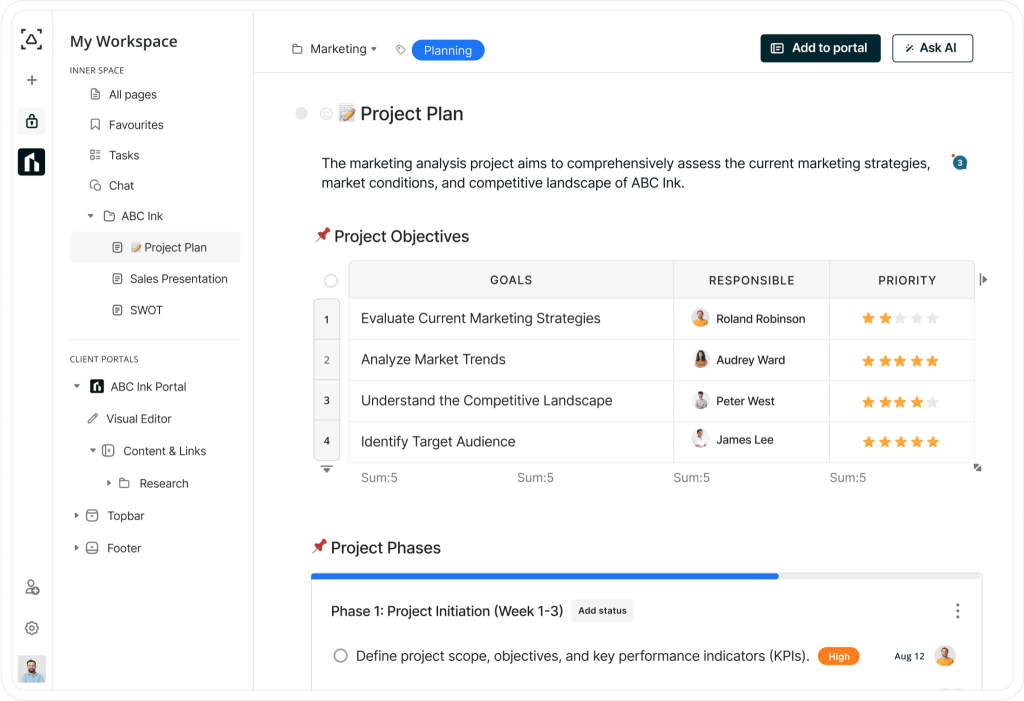
Wakefield’s research reveals a striking statistic: 54% of the 1,000 individuals surveyed report that they spend more time hunting for necessary information than they do responding to emails and messages. This quest for information isn’t just a minor inconvenience; it’s a significant drain on time and resources for employees and management alike. The constant search for pertinent data, along with the need to manage and update existing information, leads to operational inefficiencies that can have far-reaching consequences. These include a noticeable dip in productivity, prolonged task completion times, and an overwhelming sense of information overload. The result? A workforce that’s increasingly exhausted, dissatisfied, and lacking motivation.
So, how can you shield your team from these pitfalls? The answer lies in effective information management. By implementing a robust information management system, you can enhance efficiency and empower your colleagues to quickly and effortlessly access the corporate information they require. In this article, we’ll dive into the concept of information management and guide you on how to cultivate a seamless system within your organization.
What is Information Management?

Information Management (IM) is a broad term that encompasses all the systems and processes within an organization for the creation, storage, management, and dissemination of information. IM is designed to ensure that information is available to the right people, at the right time, and in the right format, supporting decision-making processes, operational efficiency, and strategic planning.
Key Aspects of Information Management:
- Data Collection: Gathering raw data from various sources.
- Data Storage: Securely storing data in databases, data warehouses, or other forms of storage systems.
- Data Organization: Classifying and indexing information to make it easily accessible.
- Data Processing: Transforming raw data into a more usable format or extracting meaningful insights.
- Information Distribution: Ensuring the right information is delivered to the right people, often through reports, dashboards, or automated alerts.
- Data Governance: Establishing policies and procedures to manage data quality, privacy, security, and compliance.
- Information Lifecycle Management: Managing the flow of an organization’s information from creation or receipt to disposal.
IM is critical for organizations to make informed decisions, improve performance, and maintain a competitive edge. It also plays a crucial role in risk management and regulatory compliance.
How to Tackle Business Challenges with Effective Information Management Solutions
Challenge 1: Data Overload and Fragmentation
Business Challenge: A company is struggling to manage the sheer volume of data it generates. The data is scattered across different departments, in various formats, and stored in multiple, disconnected systems, leading to inefficiencies and data silos.
Information Management Solution: Implementing a centralized data management system that consolidates all the data into a single repository. This system uses advanced data integration tools to ensure that data from various sources is standardized, deduplicated, and made accessible to all relevant stakeholders.
- Streamlined Data Access: Employees can quickly find the information they need, leading to faster decision-making and increased productivity.
- Improved Data Quality: The system includes features for data cleansing and enrichment, ensuring that the company relies on accurate and up-to-date information.
- Enhanced Collaboration: With a unified data source, teams can collaborate more effectively, sharing insights and driving innovation.
Challenge 2: Regulatory Compliance and Data Privacy
Business Challenge: A financial services firm needs to comply with strict data protection regulations like GDPR and CCPA. Non-compliance could result in hefty fines and damage to the company’s reputation.
Information Management Solution: The firm adopts an information management system that is designed with compliance in mind. It includes robust security features, access controls, and audit trails to monitor data usage and handling.
- Automated Compliance Workflows: The system automates compliance-related tasks, such as data retention policies and right-to-be-forgotten requests, reducing the risk of human error.
- Enhanced Security Measures: Encryption, multi-factor authentication, and regular security audits protect sensitive data from unauthorized access.
- Transparent Data Handling: The system provides clear records of data processing activities, making it easier to demonstrate compliance to regulators.

Challenge 3: Inefficient Knowledge Sharing
Business Challenge: A multinational corporation faces difficulties in sharing knowledge and best practices across its global teams, leading to redundant efforts and a lack of synergy.
Information Management Solution: The corporation implements an enterprise knowledge management platform that facilitates the capture, organization, and dissemination of knowledge throughout the organization.
- Centralized Knowledge Repository: A single source of truth for company knowledge helps avoid duplication and ensures consistency in information shared across the company.
- Advanced Search Capabilities: Employees can quickly locate relevant expertise, documents, and resources, saving time and leveraging the company’s collective intelligence.
- Community Features: Discussion forums and collaboration tools within the system encourage knowledge sharing and innovation across different departments and geographies.
Challenge 4: Real-time Data Analysis and Reporting
Business Challenge: A retail chain is unable to react quickly to market trends due to slow and outdated reporting processes that cannot handle real-time data analysis.
Information Management Solution: The retail chain deploys a modern business intelligence (BI) and analytics platform that integrates with its point-of-sale (POS) systems to provide real-time insights into sales and customer behavior.
- Real-time Dashboards: Decision-makers have access to up-to-the-minute data visualizations, enabling them to respond swiftly to emerging trends and make informed decisions.
- Predictive Analytics: The system uses machine learning algorithms to forecast sales and inventory needs, optimizing stock levels and reducing waste.
- Mobile Reporting: Executives can access reports and dashboards on-the-go through mobile apps, ensuring they stay informed no matter where they are.
How to Create an Information Management System
Understanding the essentials of setting up an information management system is crucial for your company’s success. Now, let’s dive into the practical aspects of implementing this framework. We’ve crafted a comprehensive 7-step guide designed to streamline this process for you!
Step 1. Define key goals for an information system
To make an information management system work, you need to clearly identify your company’s main goals, pains and objectives. You will see the key issues that need improvement, what the information management system should look like and what results you can expect after implementing it.
Business Example: A growing financial advisory firm needs to manage increasing client information and interactions to improve client satisfaction and retention.
Key Goals:
- Centralized Client Information: Create a single source of truth for all client data and interactions.
- Enhanced Communication: Streamline client communication and track all touchpoints.
- Client Service Improvement: Use client data to provide personalized services and advice.
- Sales and Marketing Alignment: Align sales and marketing efforts to target the right clients with the right message.
Step 2. Pick a unified information management platform
Once you’ve realized your team needs proper information management to improve productivity and data organization, you’ll need a unified tool to make it work in the best way. Make sure to create or choose a platform both on-site and remote workers will be fine working with. Think of who will use the system and how they will use it. Define the essential functions you need to cover inside the information ecosystem and whether it’s intuitive to use it in content creation, management, editing and searching.
For example, collaborative platforms with a business knowledge base such as FuseBase help allocate tasks, gather corporate information and reduce the cost of storing all sorts of corporate records. As you can see below, Fusebase workspace keep all the necessary information of any format and purpose in one place and correctly classify it.

Here, you can not only share objectives and set up action plans, but also create and communicate guidelines, company records and other information. You have full control over the data turnover with such platforms.
Step 3. Determine gaps in existing information
To check you haven’t missed anything, ask your employees for feedback, define critical business information and check whether your company has any gaps. You can create knowledge maps for each department, analyze (if possible) your competitors’ information management structures and see where you need to improve in the first place.
Here are the 7 questions you can start with:
- How easy is it for you to find the information you need for your daily tasks?
- Have you encountered any situations where you couldn’t access critical information? If so, can you describe those instances?
- Have you ever found any discrepancies or outdated information in our systems? How did it affect your work?
- Is the information you access relevant to your current role and responsibilities?
- Are there areas where you feel you receive too much or too little information?
- How effective is the current process for sharing information between departments or team members?
- Do you have any suggestions for how we could improve the way information is managed and shared within the company?
By asking these questions, you can gain valuable insights into how information flows within your organization and where there might be room for improvement.
Step 4. Organize existing information and add new content
Categorize information and add necessary links or materials to the system. Don’t be afraid to experiment with formats: folders, groups, boards and collections help you avoid getting lost in a constantly growing data flow. Make sure everyone’s okay with the chosen format and can quickly find, edit or add necessary pieces of information.
Step 5. Implement the information management system

Once it’s live, you need to make sure the system is well-explained and its main functions are clear to all your employees. Provide necessary training, explain how content updates work and if possible implement automation or AI-based frameworks to make data management smoother and much easier.
Step 6. Evaluate and optimize the new information management approach
Run a cost-benefit analysis, gather employee feedback and evaluate the overall efficiency and information management improvement after some time. Surveys and constant communication can help you define what’s working and what’s not, whether this information system is the best for your company and whether you’ve succeeded in creating management frameworks that actually help.
Here are 6 example questions that could be used in a survey to measure team satisfaction with an information management system:
- On a scale from 1 to 10, how satisfied are you with the current information management system?
- How easy is it to navigate and find information within the new information management system?
- Have you noticed an improvement in your daily tasks efficiency since the implementation of the new system?
- Are there features in the information management system that you find particularly useful or beneficial?
- How reliable do you find the information management system (e.g., uptime, speed, error frequency)?
- How has the new information management system impacted your overall job satisfaction?
These questions can provide valuable insights into how the team perceives the new information management system and where there may be room for improvement.
Step 7. Improve and update your system
Regular check-ups and improvements will ensure effective management of information and help keep your system up and running for longer. With constant analysis, you’ll be able to identify requirements for further update releases and ensure secure, convenient information storage and usage.
Summary
Enhancing your company’s approach to information management is more than just data handling; it’s a transformative process that unleashes your workforce’s capabilities, propelling your organization to the pinnacle of innovation. To achieve excellence and steer your business toward remarkable achievements, implement the following strategic measures
- Embrace Cutting-Edge Technology: Select tools and systems that align with your business goals and enhance productivity.
- Establish Clear Policies: Develop and communicate comprehensive information management policies to maintain consistency and security.
- Invest in Staff Training: Provide ongoing education to ensure your team is proficient in the latest technologies and best practices.

